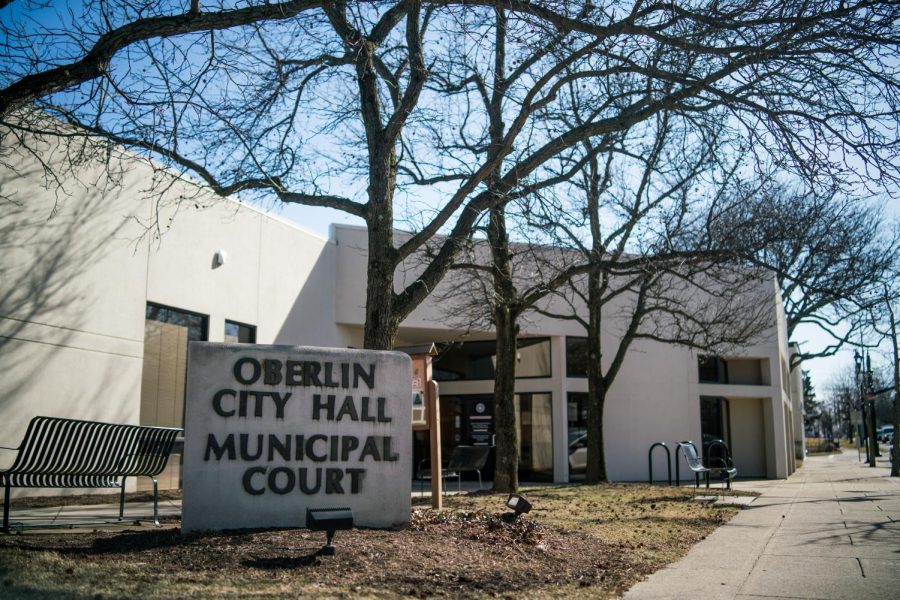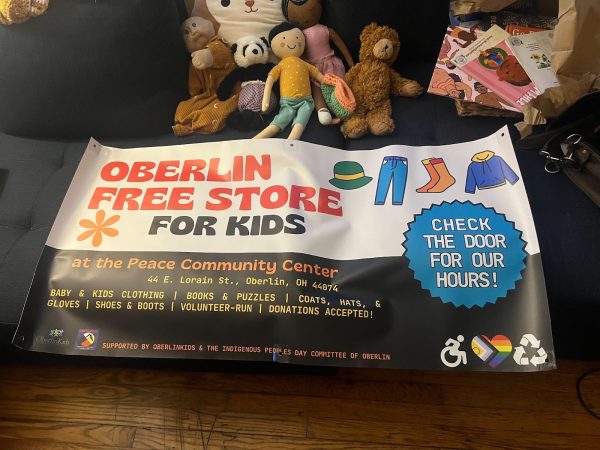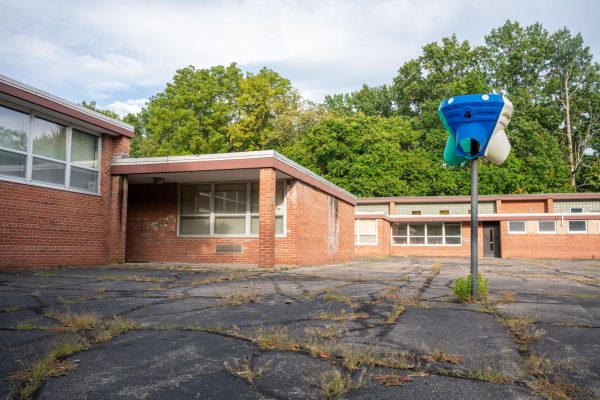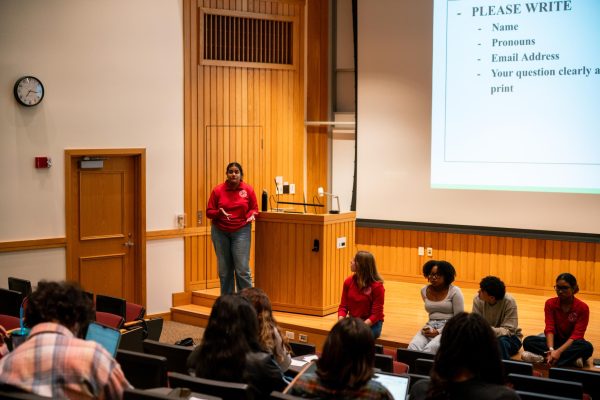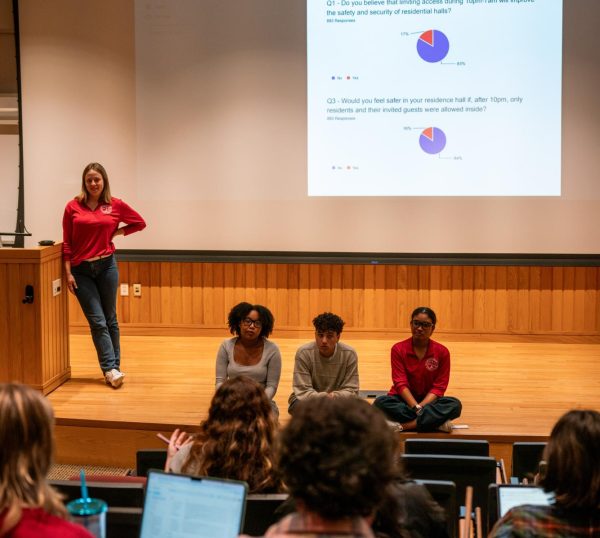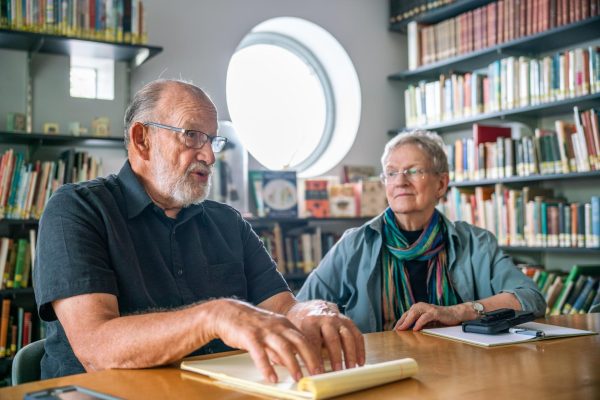Downtown Strategies Inc., Oberlin Community Improvement Corporation, Present Draft Report on Downtown Revitalization Plan
Downtown Strategies presented their findings to OCIC Feb. 8
The Board of the Oberlin Community Improvement Corporation met Feb. 8 to discuss a new draft report on how to improve Oberlin’s downtown. The OCIC had engaged an external company, Downtown Strategies, Inc., to provide recommendations on how the downtown area could be revitalized.
Janet Haar, OCIC board member and executive director for the Oberlin Business Partnership, explained the reasoning behind this collaboration.
“We needed somebody to look inside from outside,” Haar said. “The thought was, we all feel engaged in our community — and too into the community — and someone that has the expertise and the experience of looking at small rural towns like ours could do a better job of looking at the possibilities and the potential.”
The report proposed several potential solutions for improving downtown, which would follow a five-year plan.
One of the main recommendations of the report is the creation of a Community Roundtable program.
“Each month, leaders of key community organizations should gather, with no formal agenda, to discuss current projects, opportunities for partnerships, shared resources, and visioning and planning,” the report reads.
Some of the partners mentioned include Oberlin College, OCIC, OBP, the Comprehensive Plan Committee, the former Downtown Business Stakeholders Group, and the Oberlin Heritage Center. Haar considers the roundtable one of the best recommendations made by the report.
“I think one of the most important things is that leaders of the different groups in town that are responsible for certain parts of the plan collaborate and are transparent,” Haar said. “The report stressed that if the City, OBP, Oberlin College, and nonprofit organizations or merchants’ organizations are working on a part of the plan, it’s important that the heads of those organizations meet on a routine basis, perhaps monthly. They also suggested that, quarterly, all of the organizations working on all of the parts of the plan actually come together with the community to report out so that it is transparent from day one: what’s being done, and what the needs are.”
Jill Sawyer, chair of the OCIC, member of the Comprehensive Plan Steering Committee and owner of Mill on Main, thinks that the report provided much-needed support to stakeholders invested in Oberlin’s downtown.
“It has been gratifying to hear representatives of the town and the College voice their interest in and commitment to partnering on strengthening downtown Oberlin’s visibility and revitalization — recognizing that it takes town and College working together to succeed in achieving our shared goals,” Sawyer wrote in an email to the Review. The report also recommends that OCIC “establish a framework of committees, known as Action Teams, under OCIC, and recruit volunteers and multi-disciplinary professionals to begin tackling specific programs and strategies within this plan and to expand the network of downtown development supporters.”
The report provided project mapping worksheets to assist these action teams in carrying out their duties. Another key recommendation was to better advertise Oberlin’s position as a destination for arts and culture.
“Oberlin is a cultural hub with excellent performing arts centers, music performances, art education, and the like,” the report reads. “However, this was not obvious to the Downtown Strategies team upon arrival and solo tour of the City and Downtown. There is an opportunity to incorporate this richness into the City brand and with physical installations, such as signage.”
When it comes to other improvements, the report proposes revamping sidewalks and intersections and improving Oberlin’s parking management to attract more shoppers. The report further provides a roadmap for the City to encourage more businesses to set up shop in Oberlin and thereby attract more customers to the downtown area. In order to make the space more physically attractive, it proposes creating a new facade grant program to replace the city’s facade loan program. The report defines facade improvement programs as “incentive programs created to encourage property owners and businesses to improve the exterior appearance of their buildings and storefronts.” The report proceeds to describe how the proposed facade grant program would further the goal of downtown revitalization. “Although it may seem to be a minor aspect of an improvement program, design assistance enables and helps ensure that building modifications comply with any historic district guidelines or other design guidelines developed specifically to enhance buildings in the target area.”
When it comes to incorporating the recommendations with Oberlin’s Comprehensive Plan, Sawyer said there was opportunity for collaboration.
“I believe there is great synergy between strategic planning for Oberlin’s downtown and comprehensive planning for the City as a whole,” Sawyer wrote. “The fact that the two consulting firms, Downtown Strategies and KM Date Community Planning, chose to partner on these efforts right from the beginning is welcome and will be highly beneficial to both projects. The two firms created the shared Downtown Community Input Survey for the community, and the Comprehensive Plan consultant attended the Strategic Visioning Workshop led by Downtown Strategies.”
Haar also stated that the report “definitely has to be part of the comprehensive plan.”
One contentious point in the report is the starting section on real estate investments in Oberlin. The section concerns real estate belonging to the Hotel at Oberlin, the Huntington Bank building, and the 141 S. Main St. property. It gives advice and proposes ideas on how to develop the properties in the future.
“I and other people don’t feel that they did enough research to know some really important things about those sites that they talked about,” Haar said.
Sawyer defended the section, saying she felt that Downtown Strategies had done its research.
“Based on their market analysis, Downtown Strategies presented key areas in Oberlin that would benefit from a retail presence or from mixed-use development,” Sawyer wrote. “During [its] presentation, Downtown Strategies demonstrated an awareness of progress being made at certain sites as well as some known challenges.”


